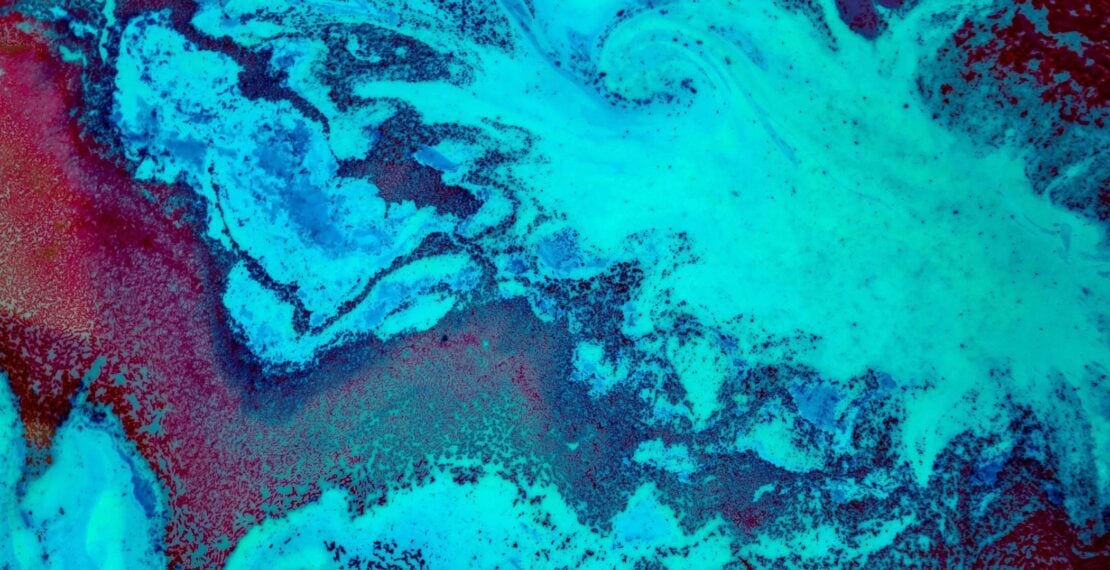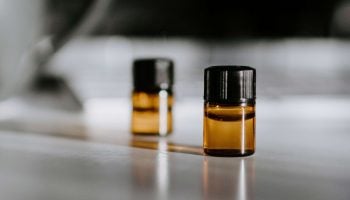Regular guest author Dr Alex O’Bryan-Tear returns to Third Wave with an analysis of the evidence for any physiological danger posed by LSD.
Despite all the media enthusiasm around microdosing and its many positive effects, there remains a small but persistent chorus of those arguing that LSD is dangerously toxic to the human body. This idea looms over LSD’s reputation in the popular imagination, even though the scientific consensus for the past 60 years has been that LSD is less toxic than pure water.
How strong is this consensus? Well, as it happens, Professors David Nichols and Charles Grob have just published a review paper examining this question. Searching through thousands of scientific studies archived on Medline, they have found just five that report deaths caused by LSD intoxication. And closer examination of these five reveals that even they are…well, dubious to say the least. These deaths seem much more likely to be attributable to contaminants falsely sold as LSD or, disturbingly, to police brutality – two tragic symptoms of LSD’s illegal status, and nothing to do with the chemistry of LSD itself.
What is toxicity?
A quick word on toxicity before we get into the nitty-gritty. Toxicity doesn’t refer to a specific type of harmfulness, but is an umbrella term for any kind of damage that a chemical might cause to the human body. Chemicals are therefore not either ‘toxic’ or ‘non-toxic’, as their potential for harm is relative to their volume and use. A chemical may be non-toxic when applied to the skin, but toxic if consumed. And while pharmaceuticals and recreational drugs tend not to be toxic at their correct dosage, virtually all chemicals will become toxic at high enough levels.
One notorious example of this is alcohol. Alcohol is mildly toxic at even modest levels, and becomes lethal quickly. Drinking a one litre bottle of vodka, or the equivalent, over the course of a night is enough to kill most people. Six people die every day in the U.S. simply for drinking more than they should on a night out.
But any chemical can become toxic at high enough levels; even pure water. Too much water intake leads to out-of-control osmosis, sodium deficiency, and widespread organ failure. Many cases of death have been reported following the consumption of 10-20 litres of water over a short space of time. Despite this, there’s no page on Talk To Frank warning teenagers of the perils of water abuse, though a small number of people suffer from severe medical issues, even death, as a result of water intoxication.
How toxic is LSD?
Professors Nichols and Grob’s review of deaths following LSD intoxication would be reassuring even without this background context. Their search through Medline’s database has found just five reported deaths from LSD intoxication, worldwide, throughout its 70-year history of use. That’s fewer than the number who die of alcohol poisoning ever year in the U.S.. But a closer examination reveals that only two of these cases seem to be genuine.
In one of these cases, the time of LSD ingestion was unknown, making the amount of LSD taken impossible to estimate. In the other, the victim was estimated to have taken a dose of 320mg, which is 3000 times the standard recreational dose. Of course, we can’t base our estimates of LSD’s lethal dose on one case alone. It may also be possible for LSD to have milder toxic effects at lower levels. But to this day we simply have no idea how much LSD is hazardous to health; all we know is that it’s hundreds or thousands times more than a typical recreational dose.
Another high-profile case of LSD poisoning occurred when eight victims snorted what were later estimated to be ‘milligram amounts’ of the stuff at once, equating to many thousands of doses, believing it was cocaine. Luckily, they were able to get medical help before succumbing to hyperthermia, vomiting, and unconsciousness. All survived with no long-term impact, except (hopefully) a tendency to avoid snorting powders without labels. And if those symptoms sound bad, remember that they all routinely occur after just a couple too many drinks.
So, LSD has the potential to be toxic, but only in absurdly high doses. You could open your mouth and stuff many tabs of LSD in there (I do not recommend this), and most likely all that would happen to you is a challenging trip. When you finally came down, you’d almost definitely still be alive. Despite the media fear around LSD’s health effects, you are far more likely to die from not just alcohol or water consumption, but from painkillers, statins, vitamin supplements, anti-depressants, salt, or Viagra.
True killers
Professors Nichols and Grob’s paper, while debunking the myth of LSD toxicity, also sheds light on a couple of characteristic ways in which LSD is wrongly blamed for accidental deaths. In the first case, we have poisoning from substances mis-sold as LSD, and in the second, we have alarming cases of police maltreatment.
Thanks to LSD’s illegality, it’s common for manufacturers to falsely substitute it for substances such as 25i-NBOMe or ‘N-bomb’, which in many countries remain legal as ‘research chemicals’. And N-bomb, although still safer than alcohol by any measure, has been linked to a number of deaths when taken at high doses. In one reported case of LSD toxicity, a post-mortem revealed low levels of LSD in the blood, but failed to test for N-bombs or any other research chemicals. However, the post-mortem revealed characteristic markers of N-bomb poisoning, leading the authors to conclude that N-bomb, not LSD, was the most likely killer.
It’s worth pointing out that poisoning and deaths from research chemicals, of which there are a growing number, are a direct consequence not of LSD use, but of LSD’s illegality. It’s only the outlawing of LSD that has spurred the invention of legal alternatives, and it’s only the impossibility of regulating illegal manufacturers that enables them to mis-sell drugs such as N-bomb as LSD. There’s very little scientific knowledge about the harms of modern research chemicals, though it’s safe to say that many of them are far more dangerous than LSD. But current drug policy continues to ignore the scientific consensus, preferring instead to blindly demonise both drugs and drug users, an attitude which leads inevitably to damage and death.
Nowhere is this demonization more clearly seen than in two cases of reported deaths from LSD that occurred while in police custody. In both cases, police were called to the scene of an agitated and delirious man wandering around in public, in the midst of what most of us would call a bad trip. Now, there are good ways and bad ways of dealing with someone on a bad trip. The police way of dealing with someone on a bad trip, according to their own reports, was to arrest them for suspected drug abuse; to treat them as non-compliant for trying to run away; to attack them with dogs, tasers, and truncheons; to hogtie them and take them into custody. The victims were both reported to continue struggling against their restraints before falling into a comatose state from which they didn’t recover. The cause – LSD toxicity, of course.
But I hopefully don’t need to point out that LSD toxicity isn’t to blame here. These kinds of deaths have a name: ‘sudden death in custody syndrome.’ They’ve been reported as caused by a combination of severe police restraints (such as hog-tying) and a number of illegal drugs, most commonly cocaine and methamphetamine. But the characteristics of such deaths have never been observed outside of police custody. In these two cases, post-mortems revealed both victims to have taken normal amounts of LSD, which has never otherwise been seen to cause such symptoms. The true danger here is not a toxic drug, but a toxic culture which stigmatizes both LSD and its users, and laws which punish, and in some cases kill, the very drug users they are supposedly there to protect.
The Way Forward
There are some lessons to be learned from this. When taking LSD, whether it’s a microdose, a therapeutic dose, or for any other purpose, make sure as far as possible that you know what substance you’re taking. And while you’d be incredibly hard pressed to accidentally overdose, make sure you know how much you’re taking too. Test kits such as the ones available here are a cheap and legal way to stay safe. These sensible harm-reduction measures will eliminate, as far as possible, the risk of physiological harm. As for how to mitigate the risks of unpleasant psychological effects, we’ve got you covered. Finally, to reduce the societal risks, the best thing you can do is get out there and fight fiction with facts. When used correctly, LSD can be a powerful and safe catalyst for therapeutic change.
To learn about the safest and most effective ways of taking psychedelics like LSD, sign up to our microdosing course for extensive resources and guidance.







The real toxicity of LSD and psychedelics in general is to the egoic conditioning of culture, cartesian duality and institutionalized “science” which as Max Plank observed: “advances one funeral at a time”.
Dissolution of, and revealed alternatives to, the status quo are the real and unnamed fears of politicians and society.
Are psychedelics dangerous? Like a power saw, used improperly, psychedelics are without doubt very dangerous! Power saws are not the subject of hysteria, but instead require training in their use and respect.
“Bad trips,” “psychosis,” and impurities are all the result of a lack of skillful use aggravated and sustained by societies’ fears and willful ignorance.
Used properly, psychedelics can and do relieve existential misery and reveal new views of reality, identity, and happiness with a side dish of long-lasting awe.
Thanks- Important research and findings. Keep helping governments and societies aware of wrong stereotypes re: psychedelics and their tremendous healing and transformative powers when controlled for ‘set and setting’
Can LSD cause physical changes to the body?